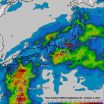(Press-News.org) Undergoing an experience with another person — even if we do it in silence, with someone we met just moments ago — seems to intensify that experience, according to new research published in Psychological Science. The research shows that people who share experiences with another person rate those experiences as more pleasant or unpleasant than those who undergo the experience on their own.
"We often think that what matters in social life is being together with others, but we've found it also really matters what those people are doing," says psychological scientist and lead researcher Erica Boothby of Yale University. "When people are paying attention to the same pleasant thing, whether the Mona Lisa or a song on the radio, our research shows that the experience is much more pleasurable. And the reverse is true of unpleasant experiences — not sharing them makes them more pleasurable, while sharing them makes them worse."
Thinking about shared experiences like going to the movies or viewing art in museums, Boothby and Yale colleagues Margaret Clark and John Bargh wanted to explore the consequences of sharing experiences that unfold socially but silently.
In their first study, 23 female college students came to the lab and met another participant who would be completing the study at the same time. Unbeknownst to the students, the "other participant" was actually part of the research team and she always played the role of the second participant in the study.
The pair was told that they would engage in several activities, including tasting chocolate and looking at a booklet of paintings, side by side at a table. They were told they would be assigned to complete the activities in random order but, in reality, the student was always only assigned to taste the two chocolates, one at the same time as the second participant and the other while the second participant was looking at the booklet. After the student tasted both chocolates, the experiment ended "early" before they got a chance to look at the artwork.
Although the chocolate samples were presented as two different chocolates, they were actually squares taken from the same bar of 70% dark chocolate.
Students reported liking the chocolate they had tasted at the same time as the other participant more than the chocolate they had tasted while the other participant was looking at the booklet. Although the chocolate pieces were identical, the students tended to report the "shared" chocolate as being more flavorful, which suggests that the mere act of sharing may influence how things are actually sensed or perceived by us.
To find out whether sharing makes any experience more pleasant or actually intensifies specific feelings (positive or negative), the researchers tasked another group of students to taste a bitter "chocolate substitute" (really just 90% dark chocolate, which pre-testing revealed to be unpleasant).
This time, the students said that they liked the "shared" chocolate less. They also reported feeling more absorbed in the tasting experience and more in tune with the other participant when they tasted the chocolates at the same time.
The researchers suggest that sharing an experience with someone else, even silently, may focus our attention, making us more attuned to what we are sensing and perceiving.
"When people think of shared experience, what usually comes to mind is being with close others, such as friends or family, and talking with them," says Boothby. "We don't realize the extent to which we are influenced by people around us whom we don't know and aren't even communicating with."
Ultimately, these findings may have significant implications for social life in a world that is filled with distractors:
"We text friends while at a party, check our Twitter feed while out to dinner, and play Sudoku while watching TV with family — without meaning to, we are unsharing experiences with the people around us," says Boothby. "A pleasant experience that goes unshared is a missed opportunity to focus on the activity we and others are doing and give it a boost."
INFORMATION:
For more information about this study, please contact: Erica Boothby at erica.boothby@yale.edu.
The article abstract is available online at: http://pss.sagepub.com/content/early/2014/10/01/0956797614551162.abstract
The APS journal Psychological Science is the highest ranked empirical journal in psychology. For a copy of the article "Shared Experiences Are Amplified" and access to other Psychological Science research findings, please contact Anna Mikulak at 202-293-9300 or amikulak@psychologicalscience.org.
Typhoon Phanfone packed heavy rainfall as it brushed over Japan and NASA's TRMM satellite identified where the rain fell. That data was used to make a map of rainfall totals.
The Tropical Rainfall Measuring Mission or TRMM satellite has the ability to calculate rainfall rates within storms as it orbits around the Earth's tropics from space. TRMM data can also be used to create rainfall maps that show how much rain has fallen over given areas.
Phanfone was a powerful super typhoon with sustained wind speed estimated at 130 knots (150 mph) as it approached Japan but ...
Being the center of attention can have its drawbacks. For female chimpanzees, being around too many rowdy males is disadvantageous when foraging for food, an effect that can ultimately interfere with her reproductive ability. These are some of the findings of an 11-year-long study of wild East African chimpanzees in Uganda, led by Melissa Emery Thompson of the University of New Mexico in the US. It is published in Springer's journal Behavioral Ecology and Sociobiology.
Female chimpanzees have an exceedingly slow reproductive schedule, and only give birth every five to ...
New Rochelle, NY, October 7, 2014—Low sexual desire is common among both pre- and post-menopausal women. It can cause personal distress, harm relationships, and have a negative impact on body image and self confidence. Yet few women seek medical care for this condition, and the reasons are explored in a timely article in Journal of Women's Health, a peer-reviewed publication from Mary Ann Liebert, Inc., publishers. The article is available free on the Journal of Women's Health website at http://online.liebertpub.com/doi/full/10.1089/jwh.2014.4743 until November 7, ...
Winston-Salem, N.C. – Sept. Oct. 7, 2014 – Children who start toilet training before age 2 have a three times higher risk of developing daytime wetting problems later, according to new research at Wake Forest Baptist Medical Center.
"Parents who train their children early to meet preschool deadlines, to save landfills from diapers or because they think toddlers are easier to train should know there can be serious repercussions," says lead author Steve Hodges, M.D., an associate professor of pediatric urology at Wake Forest Baptist.
The study, reported ...
ROSEMONT, Ill.—Physical therapy after total hip (THR) or total knee replacement (TKR) surgery is standard care for all patients. A new study, appearing in the October 1 issue of the Journal of Bone & Joint Surgery (JBJS), also found that physical therapy before joint replacement surgery, or "prehabilitation," can diminish the need for postoperative care by nearly 30 percent, saving an average of $1,215 per patient in skilled nursing facility, home health agency or other postoperative care.
Approximately 50 million U.S. adults have physician-diagnosed arthritis. ...
San Francisco, CA, October 7, 2014 – Liquid laundry and dishwasher detergent pods are an emerging source of chemical exposure in children. When squeezed or bitten into, these pods can burst and send detergent into the mouth, nose, and eyes. A new report published in the current issue of the Journal of the American Association for Pediatric Ophthalmology and Strabismus (AAPOS) cautions that these products should be kept away from children because the bursting detergent pods can cause significant corneal injury.
Detergent pods may offer a simpler way to do laundry, ...
Studying rats as model subjects, scientists found that adolescents were at an increased risk of suffering negative health effects from sugar-sweetened beverage consumption.
Adolescent rats that freely consumed large quantities of liquid solutions containing sugar or high-fructose corn syrup (HFCS) in concentrations comparable to popular sugar-sweetened beverages experienced memory problems and brain inflammation, and became pre-diabetic, according to a new study from USC. Neither adult rats fed the sugary drinks nor adolescent rats who did not consume sugar had the same ...
Research on zoantharians, a group of animals related to corals and anemones, by researchers James Reimer of the University of the Ryukyus in Okinawa, Japan, Angelo Poliseno of Universita Politecnica delle Marche in Italy, and Bert Hoeksema from Naturalis Biodiversity Center, Netherlands, has demonstrated how little we know about marine diversity in the so-called "center of marine biodiversity" located in the central Indo-Pacific Ocean. The study was published in the open access journal ZooKeys.
The researchers utilized previously collected specimens from Indonesia, ...
Philadelphia, PA, October 6, 2014 – Sandwiches make up a substantial part of the American diet and are a significant contributor to daily energy and sodium intake. By closely analyzing data from the federal nationwide dietary intake survey known as "What We Eat in America NHANES 2009-2010," a team of Department of Agriculture (USDA) researchers found that on any given day 49 percent of U.S. adults eat at least one sandwich, and sandwiches account for one-fifth of total daily sodium intake. The study was conducted by USDA Agricultural Research Service (ARS) investigators ...
Infrared satellite imagery from NASA's Aqua satellite shows what looks like an arm from Tropical Storm Simon's northern quadrant, reaching over Baja California to mainland Mexico. Forecasters at the National Hurricane Center noted that Simon is just an "arm's reach" to the southern U.S. and expect rainfall and rough surf to affect that area of the country.
On Oct. 6 at 0347 UTC (Oct. 5 at 11:47 p.m. EDT) the Atmospheric Infrared Sounder called AIRS that flies aboard NASA's Aqua satellite captured cloud top temperature data on Simon. On band of thunderstorms wrapping into ...





